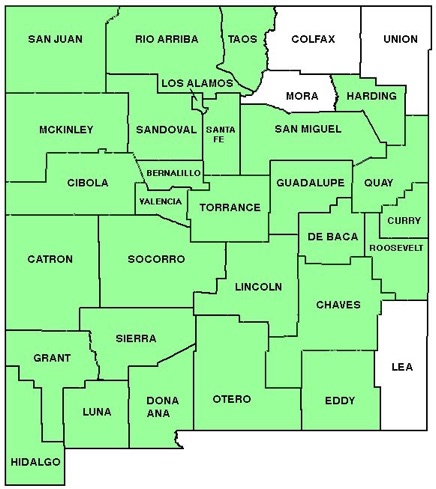WILDFLOWERS OF NEW MEXICO
From early spring to first frost, these common and widespread, erect, 5–24-inch tall plants with grayish, hairy leaves bloom with dense, round clusters of white flowers. Note the spectacle-like pairs of seeds that line the growing stem below the flower head.
FLOWERS: February–October. Dense, round-topped clusters on the stem tips, flowers white with 4 rounded petals 3/16–5/16-inch long (4–7 mm); fruit distinctive twin round disks joined like eyeglasses, each disk about 1/4-inch wide (6 mm); the fruit stem (pedicel) 3/8–1/2-inch long (8-14 mm) continues to grow as seeds ripen.
LEAVES: Basal, alternate on stem; blades hairy, grayish-green. Basal and lower leaves linear to lance-shaped, 1 1/4–2 2/4-inches long (3–7 cm), margins with coarse teeth or pinnate lobes along midrib; upper leaves linear to lance-shaped with entire to wavy margins.
HABITAT: Loose sand, dunes, gravelly soils, disturbed areas; desert scrublands, pinyon-juniper woodlands.
ELEVATION: 3,300–7,600 feet.
RANGE: AZ, CO, NV, NM, TX, UT.
SIMILAR SPECIES: Palmer’s Spectacle Pod, D. candicans (see photo below), in eastern NM, has larger seed disks, 3/8-inch (8–10 mm) diameter.
NM COUNTIES: Statewide, except extreme se and ne counties (Colfax, Lea, Mora, Union), in low- to mid-elevation, dry habitats.

SPECTACLE POD MUSTARD
DIMORPHOCARPA WISLIZENI
Brassicaceae, Mustard Family
Annual herb



THE CONTENTS OF THIS WEBSITE ARE COPYRIGHTED AND CANNOT BE USED
WITHOUT PERMISSION OF GEORGE OXFORD MILLER




Range Map for
Dimorphocarpa wislizeni

SIMILAR SPECIES
Palmer’s Spectacle Pod, D. candicans, on the plains of eastern NM, has larger seed disks, 3/8-inch (8–10 mm) diameter, and stemless upper leaves with folded margins.
EMAIL ME